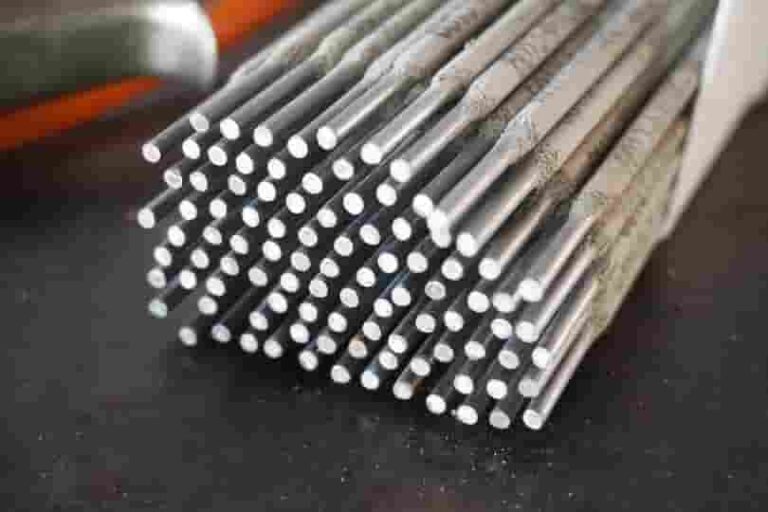Project Report For Welding Rod Manufacturing
Introduction
Project report for Welding Rod Manufacturing is as follows.
Welding Electrodes are wires that are linked to the Welding Machine and aid to create an electric arc. The current flows through these wires, and the heat produced in the process causes the electrode to melt and fuse, allowing the electric arc to form. Tungsten is the main component of these welding electrodes. Tungsten particles have a high melting point, which allows the electrode to store a large amount of current and form an electric arc.
Get Completely Custom Bankable Project Report
Types Of Welding Rod Manufacturing
There are two types of electrodes used in welding machines: consumable and non-consumable. Consumable electrodes begin to melt throughout the melting process and get bonded to the welded portion. Non-consumable electrodes, on the other hand, will not melt and are used as a separate filter material.
CONSUMABLE ELECTRODES:- Consumable electrodes are classified as follows:
Light coated electrodes – The surface of these electrodes contains a thin layer of coating. Brushing and spraying are used to create this layer.
Bare electrodes – These electrodes have a limited range of uses. This type of electrode is mostly used to weld Manganese steel.
Shield arc electrodes – These electrodes produce protective gas-like layers that operate as an effective barrier to keep contaminants out of the hot weld zone.
NON CONSUMABLE ELECTRODES:- Non-consumable electrodes are those that will not melt. The following are some examples of non-consumable electrodes:
Carbon electrodes –These electrodes are mostly used for cutting and welding. This electrode is composed of graphite particles.
Tungsten Electrodes – Tungsten is a rare metallic element that is utilised in the production of gas tungsten arc welding (GTAW) electrodes. The GTAW technology transfers the welding current to the arc by utilising the hardness and high-temperature resistance of tungsten. With a melting point of 3,410 degrees Celsius, tungsten has the highest melting point of any metal.

Welding Electrode Manufacturing Process
The first step in the manufacturing process is the preparation of the base metal. The base metal is typically made of mild steel or stainless steel, and it must be cleaned and polished to remove any impurities. This is done to ensure that the final product has a consistent quality and can produce a strong weld.
After preparing the base metal, it is time to apply the coating. The coating on welding rods is critical to the performance of the rod. The coating serves several functions, including protecting the rod from oxidation, controlling the arc, and providing a flux that cleans the weld as it is being formed. The coating is usually made of a combination of minerals, including iron oxide, titanium dioxide, and silicon dioxide. These minerals are mixed with binders such as cellulose or starch and then applied to the base metal through a process called extrusion.
During the extrusion process, the coating is heated and forced through a die that shapes it into the desired size and shape. The coated rods are then dried to remove any moisture and ensure that they are ready for use. Once the rods are dry, they are cut to the appropriate length and packaged.
The packaging for welding rods is critical to their performance and shelf life. Welding rods must be stored in a dry environment to prevent them from absorbing moisture, which can affect their performance. They are typically packaged in sealed containers with a desiccant to absorb any moisture that may be present.
Market Potential Of Welding Rod Manufacturing
The global welding electrodes market was worth $3.02 billion in 2019 and is predicted to reach $3.79 billion by 2027, increasing at a 3.0% CAGR during the forecast period.
Expenses

Product Cost Breakup

Reveneue Vs Expenses

Market Trend

With the introduction of new materials and an increased need for welding automation, weld data monitoring, and other services, the welding industry is continually evolving in order to seek out new technologies and methods. Furthermore, the fabrication and manufacturing industries are emphasising greater customer service and adapting new welding technologies and procedures to develop more adaptable welding solutions that would fit both large and small businesses.
In such instances, the application of welding procedures such as short-circuit MIG simplified with welding equipment is creating potential area for the respective industry. Its capacity to assist the welding operator in controlling the puddle and selecting high-quality welds, better user training, and performance efficiency is a significant trend expected to boost the welding sector, further fueling this market.
The significant growth of the automotive and transportation industries, as well as the construction industry, due to an increase in the number of applications across various end-user industries utilising welding electrodes for repair and maintenance purposes, will pave the way for lucrative opportunities and growth in the welding electrodes market. The growing global demand for hybrid and electric vehicles is expected to create a profitable growth potential for the welding electrodes market.
The growing need for quality electrodes by end-user industries throughout the world to employ welding electrodes for maintenance and repair drives the welding electrodes market forward. The growing demand for welding electrodes in the oil and gas industry, building construction, shipbuilding, and steel manufacturing is driving market expansion.
Increasing technological advancement in the marine, aerospace and defence, pipe industry, construction, and power generation sectors increases demand for quality welding electrodes due to rising infrastructure in industrial processes are some of the factors expected to influence welding electrodes market growth from 2020 to 2030.

